Sunbirds and their Allies
The gallery comprises photos of Sunbirds and Spiderhunters (Nectariniidae), and Flowerpeckers (Dicaeidae) see Taxonomy note. I photographed the featured species in a tropical forest, mangrove, and garden habitat. These Old-World birds, especially the dimorphic males, are engaging subjects to photograph as they can have iridescent colours. Except for spiderhunters, both families exhibit plumage dimorphism.
Sunbirds and Allies
Sunbirds and Allies Notes
All featured species are ‘Red List 2019’ assessed as ‘Least Concern’. One of the best places to photograph sunbirds is Singapore as the parks and reserves are easily accessible by public transport. However, it only has seven resident species, two of which have no recent sightings. The Singapore list comprises six flowerpeckers. Four of these are very rare. Two common residents are the Scarlet-Backed and Orange-bellied Flowerpeckers.
I photographed the Orange-bellied Flowerpecker, streaked spiderhunter and black-throated sunbird in Malaysia. And the Mistletoebird in Australia.
The only Australian resident species of sunbird is the olive-backed sunbird, ssp frenatus, locally known as a yellow-bellied sunbird.
Photo Essay of Olive-backed Sunbirds Nesting
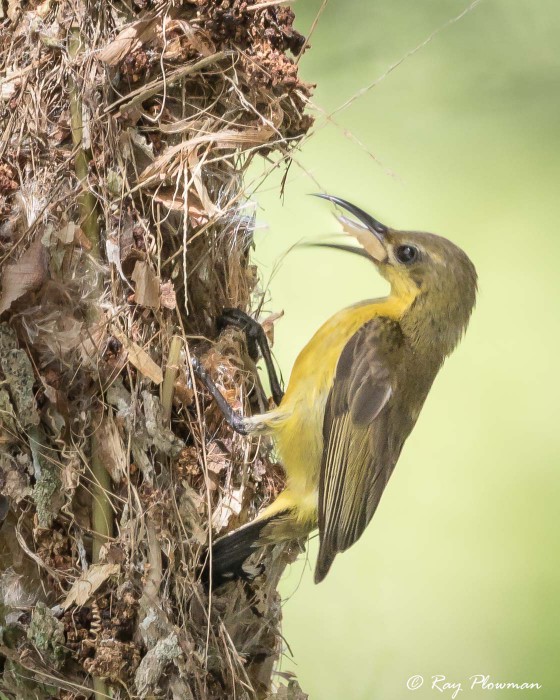
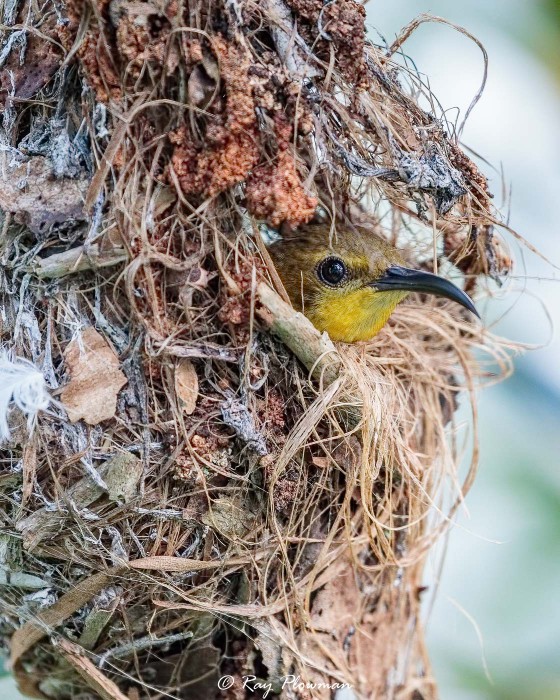
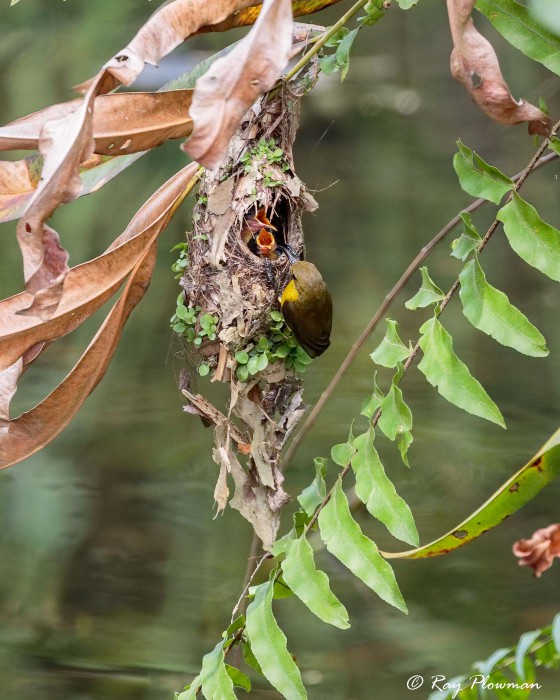
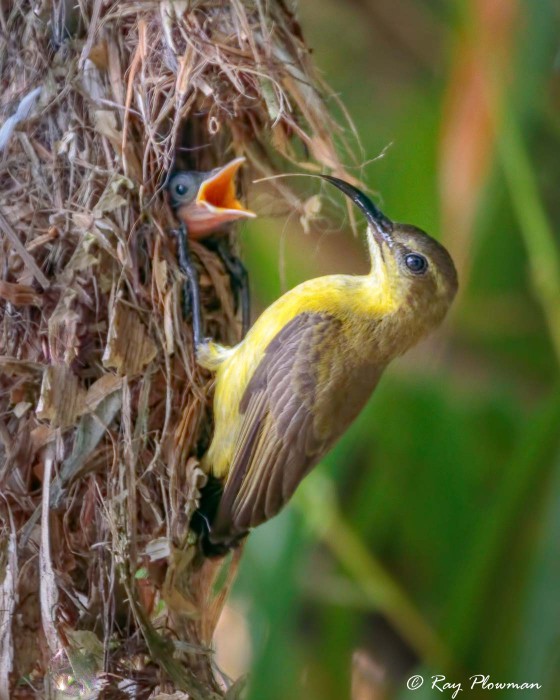
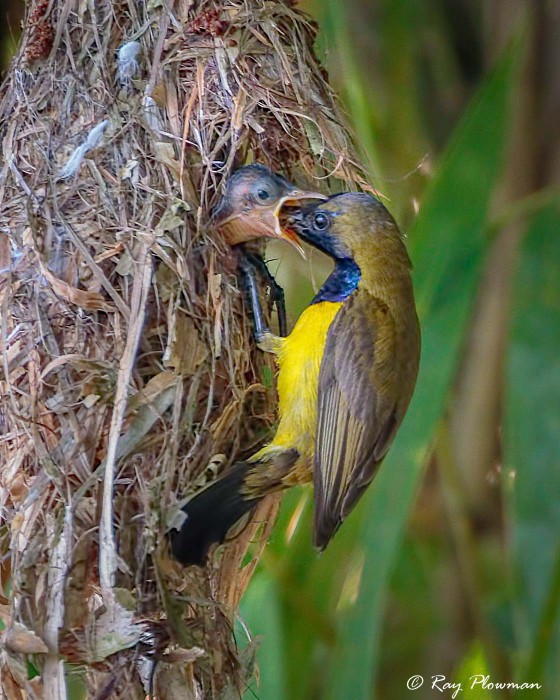
Olive-backed Sunbirds Nesting Notes
These are probably the most common species found in Singapore. The gallery shows images of nest building, nests built over land and water, a female incubating here eggs and several different nests of both male and female feeding chicks at different stages in their lifecycle.
The image of a female in the nest incubating her eggs, which takes about two weeks, was built over the water in Sungei Buloh Wetland Reserve. I returned to this nest after several days, but it had been predated possibly by the squirrels or crows that I often see in the area. Other known predators include macaques and black-naped orioles.
Sunbirds are pollinators feeding on nectar. One image shows a female regurgitating nectar to feed chicks. Other photos show male and female birds feeding young, which typically fledge in a couple of weeks. One nest in Sungei Buloh was built over the water, while photographing I saw a water monitor lizard cruising below the nest, also macaques where nearby both interrupted the feeding, the parents waiting until the danger had passed. Chicks are fed insects, a supplement to nectar. Parents remove faecal sacs after feeding and deposit away from the nest. The last image shows well-developed young, possibly near to fledging looking at the world.
Sunbird, Spiderhunter and Flowerpecker Behaviour
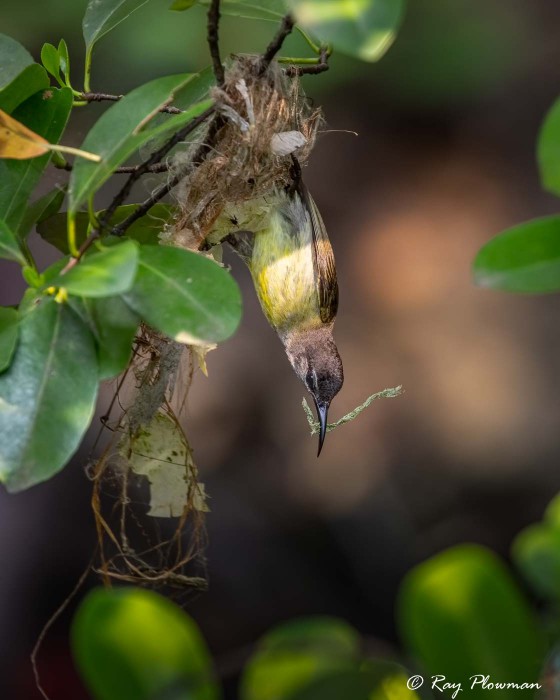
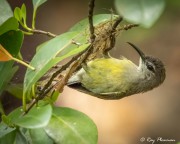
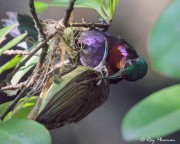
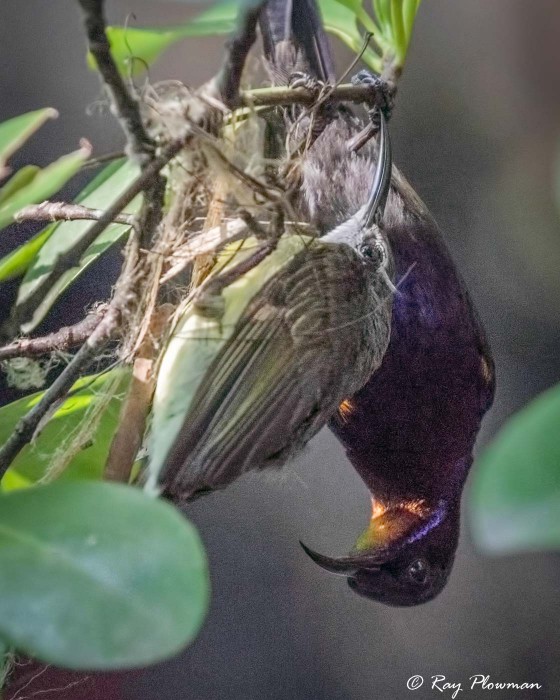
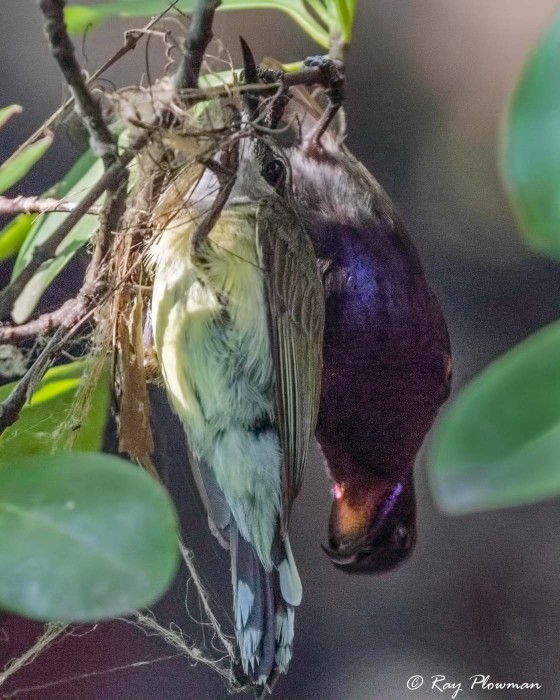
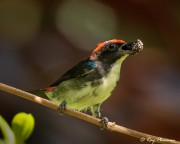
Sunbird, Spiderhunter and Flowerpecker Behaviour Notes
The first five images show a female Copper-throated Sunbird starting to build here nest which, I think this was a second attempt at nest building, a nearby nest was abandoned. A male suddenly flew to the female courting here but flew off after half a minute or so. I revisited the area about a week later, but the nest had gone. Two images show a male Copper-throated Sunbird perched and preening himself.
The other photos are male and female Scarlet-backed Flowerpeckers and a Streaked Spiderhunter feeding.
Sunbirds and their Allies Taxonomy
The simplified family tree figure shows the taxonomy relevant to Sunbirds and Spider-hunters photo album.
J Boyd’s Taxonomy in Flux Checklist places these families in Basal Passeroidea, which comprise:
(a) Sunbirds and Spider-hunters (Nectariniidae),
(b) and Flower-peckers (Dicaeidae).












![Olive-backed [Yellow-bellied] Sunbird (Cinnyris jugularis frenatus) female perched at Cairns Botanic Garden Olive-backed [Yellow-bellied] Sunbird (Cinnyris jugularis frenatus) female perched at Cairns Botanic Garden](https://rayplowman.co.uk/wp-content/uploads/2018/07/Yellow-bellied-Sunbird-Female-7492-180x144.jpg)


















